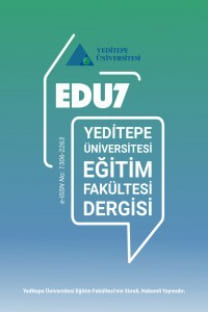THE USE OF L1 IN THE EFL CLASSROOM
In English Language Teaching (ELT) profession, there still is no
general consensus on the use of mother language (L1) while teaching a target
language (L2). Views on the issue differ
from both person to person and approach to approach. There are proponents of L1
who believe it can be used when necessary. There are also those who totally
shun the use of the mother tongue because, according to them, it hinders the
learning of a foreign language. This study
tries to contribute to ELT field by examining the effects of the use of L1 on
the internalization of
L2 grammar structures in Turkish university English
preparatory school. 165 students whose major is business,
participated into the study. The study
attempts to analyze how one of the variables changes when another variable is
manipulated and has an explanatory nature.
The relationship between the dependent and independent variables is
established through the analysis of data collected through two tests: an
achievement test and a progressive test by means of descriptive statistics and
t-tests. This
study could not find hard evidence in favour of L1 being used in the L2
context.
Anahtar Kelimeler:
language
___
- Anton, M., DiCamilla, F. J. (1999). Socio-cognitive functions of L1 collaborative interaction in the L2 classroom. The Modern Language Journal, 83/2, 233-247.
- Atkinson, D. (1987). The mother tongue in the classroom: A neglected resource? ELT Journal, 41(4), 241-247.
- Auerbach, E. R. (1993). Reexamining English only in the ESL classroom. TESOL Quarterly, 27(1), 9-32.
- Cook, V. (2001). Using the first language in the classroom. Canadian Modern Language Review, 57(3), 403-423.
- Greegio, S., Gil, G. (2007). Teacher’s and learners’ use of code switching in the English as a foreign language classroom: a qualitative study. Linguagem & Ensino, 10/2, 371-379.
- Howatt, A. P. R. (1984). A history of English language teaching. Oxford: Oxford University Pres.
- Harbord, J. (1992). The use of the mother tongue in the classroom. ELT Journal, 64/4, 350-355.
- Levine, G. S. (2003). Student and instructor beliefs and attitudes about target language use, first language use and anxiety. The Modern Language Journal, 87/3, 342-364.
- Littlewood, W., Yu, B. (2009). First language and target language in the foreign language classroom. Language Teaching, 44/1, 64-77.
- Macaro, E. (2001). Analysing student teachers’ code switching in foreign language classrooms: Theories and decision making. The Modern Language Journal, 85(iv), 531-548.
- Mattioli, G. (2004). Native language intrusions and making do with words: Linguistically homogeneous classrooms and native language use. English teaching forum. 2(43).
- Song, Y. (2009). Prospect: An Australian Journal of TESOL. Volume 24, No 1.
- Scott, M. J., De La Fuente, M. J. (2008). What’s the Problem? L2 Learners’Use of the L1 During Consciousness-Raising, Form-Focused Tasks. The Modern Language Journal, 92/1, 100-113.
- Turnbull, M., & Arnett, K. (2002). Teachers’ use of the target and first language in second and foreign language classroom. Annual Review of Applied Linguistics, 22, 204-218.
- Liu, D., Ahn, G.–S., Baek, K.–S., & Han, N.-O. (2004). South Korean high school English teachers’ code switching: Questions and challenges in the drive for maximal use of English in teaching. TESOL Quarterly, 38/4, 605-638.
- Yayın Aralığı: Yıllık
- Başlangıç: 2006
- Yayıncı: Yeditepe Üniversitesi
